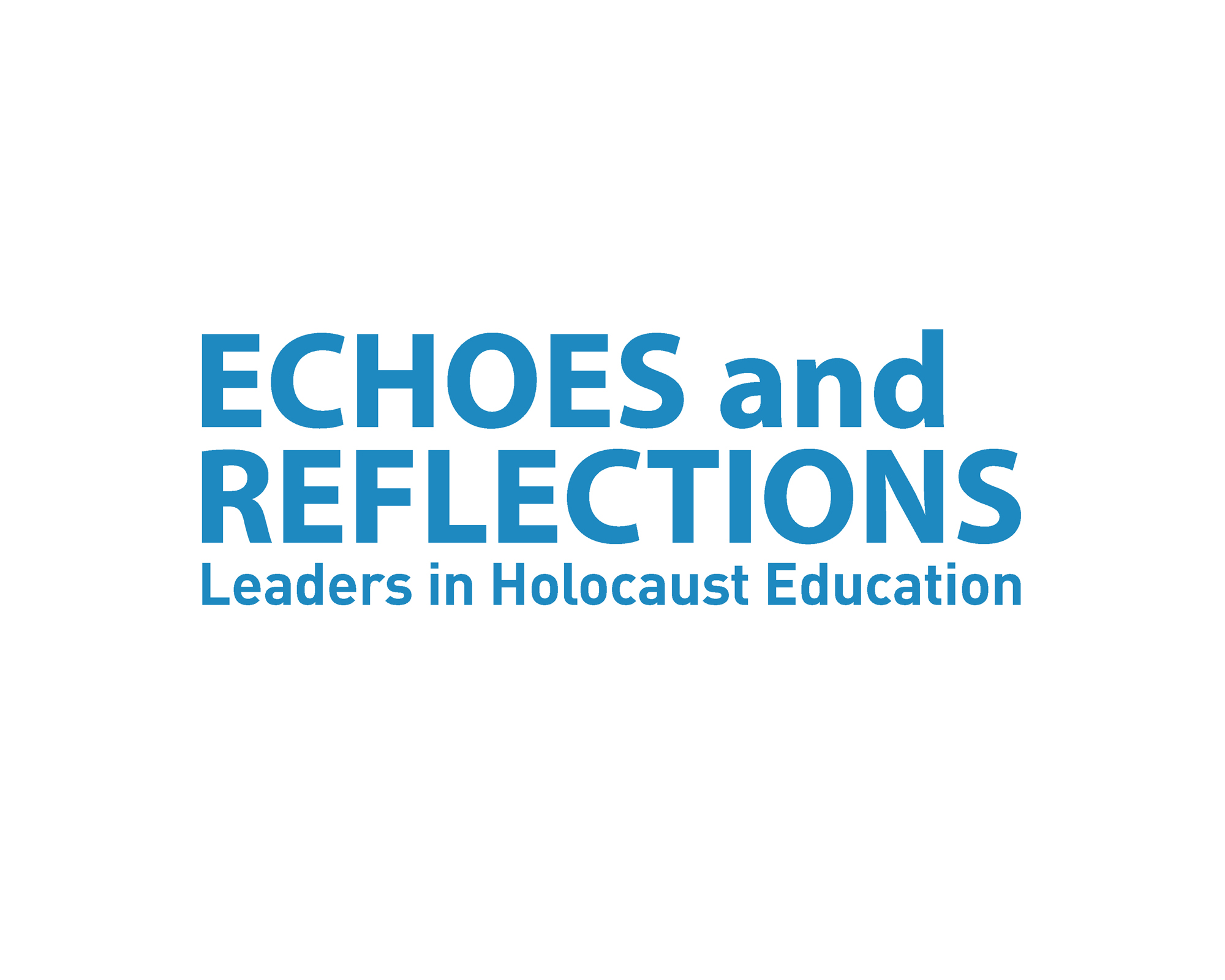Back to School with Echoes and Reflections - Part 5

Today continues a 10-part series called “Back to School with Echoes and Reflections.” Each installment takes a detailed look at one of the 10 Echoes and Reflections lessons.
Echoes and Reflections is a multimedia professional development program for secondary school teachers in the United States that provides them with accurate and authentic Holocaust information for their classrooms. Programs are held around the country at no cost to teachers or schools, and participants receive a complimentary copy of the 10-part Teacher’s Resource Guide that equips them with the tools they need to help today’s students study the Holocaust as a significant event in human history.
Echoes and Reflections combines the resources and competencies of three world leaders in education―the Anti-Defamation League’s experience in curriculum and professional development, access to USC Shoah Foundation’s Visual History Archive of survivor and witness testimonies and digital educational tools, and Yad Vashem’s historical expertise and primary source materials―resulting in the most comprehensive Holocaust education program available.
Echoes and Reflections includes everything educators need to teach the complex issues of the Holocaust. Each lesson within the Echoes and Reflections Teacher’s Resource Guide explores a different aspect of the Holocaust and encourages students in grades 6-12 to build an authentic and comprehensive portrait of the past as they frame their own thoughts, resulting in a deeper level of interest and inquiry.
The modular design of the Echoes and Reflections Teacher’s Resource Guide includes photographs, literature, artwork, diary entries, government documents and other primary source materials that teachers may easily photocopy and distribute to students. Lessons also incorporate testimony from USC Shoah Foundation’s Visual History Archive on DVD Each lesson addresses Common Core State Standards, and each one has been integrated into IWitness. IWitness is USC Shoah Foundation’s educational website that provides students and teachers access to more than 1,300 full life histories and testimonies of survivors and witnesses to the Holocaust and other genocides from the Visual History Archive for guided exploration, multimedia projects, activities and lessons.
To date Echoes and Reflections has prepared almost 20,000 educators and community leaders across the United States to use the Teacher’s Resource Guide effectively. Teachers interested in more information about Echoes and Reflections should contact echoes@adl.org.
Lesson 5: The “Final Solution”
Teachers are encouraged to be sensitive to students’ reactions to the complex and difficult subject matter in Lesson 5 – the mobile killing squads, Nazi extermination camps and the “Final Solution of the Jewish Question.”
The lesson begins with a “K-W-L” activity, in which students list what they know about the Final Solution, what they want to know, and, throughout the lesson, what they learned.
Students watch testimony clips from two camp survivors, Ellis Lewin and Abraham Bomba. Lewin and Bomba describe their arrivals at Auschwitz and Treblinka, respectively, including what they heard and saw, how Lewin was separated from his mother, and why Bomba was one of only five people out of 18,000 to survive the arrival at Treblinka. Teachers lead a class discussion to help students make sense of what they have heard.
Next, students read and discuss an excerpt from Elie Wiesel’s Night as a class. In this section of Wiesel’s memoir about the Holocaust, he and his family arrive at Auschwitz. Wiesel and his father see Wiesel’s mother and sister for the last time but are narrowly spared from death.
The lesson turns to an exploration of art made by camp prisoners. Students read poems written by survivor Dan Pagis and look at a drawing by Zinovii Tolkatchev. Each work conveys the artist’s emotional response to being in the camps. Students may write in their journals about how the arts helped them through difficult times in their own lives.
The second half of the lesson is about the perpetrators of the concentration and extermination camps. Through testimony from survivors Itka Zygmuntowicz and Nathan Offen, students get a sense of some of the horrors, humiliation and intimidation that camp prisoners had to endure daily. Offen’s emotional testimony also demonstrates to students the severe toll his experiences continue to have on him even decades later.
Teachers next distribute an excerpt of a transcription of an interview with Franz Stangl, commandant of the Sobibor extermination camp. In the interview, Stangl admits that he thought of the Jews who came to the camps as “cargo,” not human beings. After going over a handout about the Nazi concentration camp system and explaining leading SS officer Adolf Eichmann’s defense that he was simply following orders, teachers encourage students to consider the idea of personal responsibility. What responsibility does each person have to make sure something like the Holocaust never happens again?
To integrate IWitness into Lesson 5, teachers may pair four Auschwitz-Birkenau photos with a testimony clip from Lili Meier, who acquired the photos. They may also choose to find clips that illustrate interviewees’ “road to Auschwitz” to show the varying experiences that all led to Auschwitz.
Next week – Lesson 6: Jewish Resistance